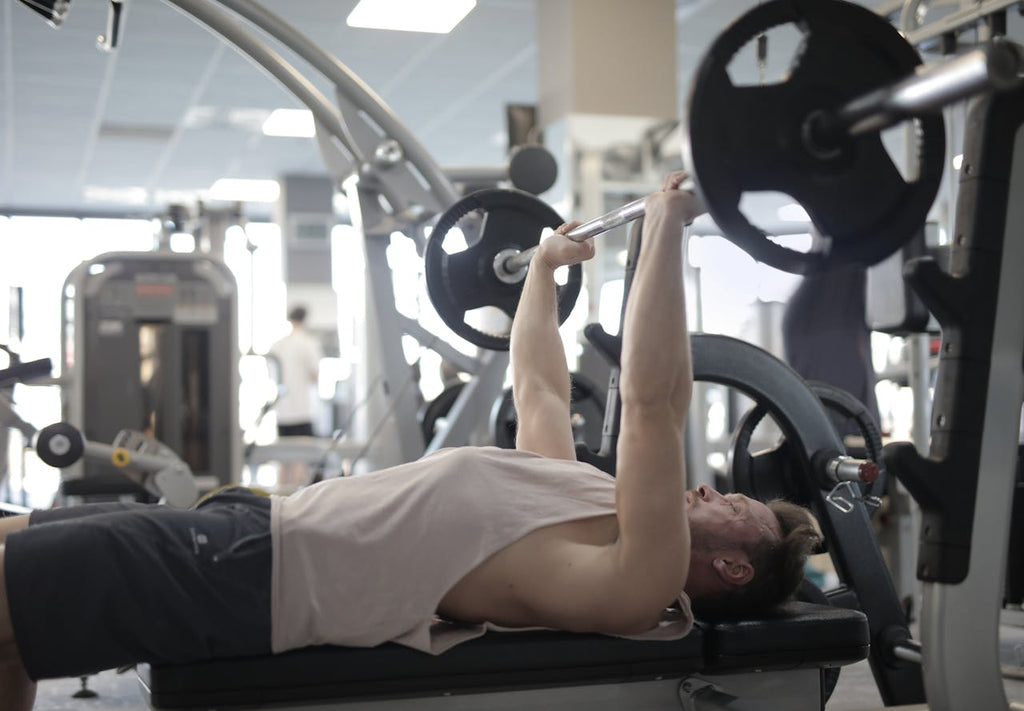
Navigating tons of fitness fads and formulas can be as exhausting as the workout itself. With tailored exercises, you can cut through the chaos and build your body with precision. In this blog post I’ll cover how to transform your body with targeted exercise routines and show you how to craft a regimen that focuses on specific muscle groups for transformation.
I’ll not only outline what exercises are best for targeting different parts of your body, but also how to structure your routine, and the science-backed reasons why this approach is so effective.
The Science Behind Targeted Workouts
Before we launch into the nitty-gritty of individual exercises, it's important to understand the science behind targeted workouts. The concept is rooted in the principle of progressive overload, the gradual increase in stress placed upon the body during exercise. By focusing on specific muscle groups, you can optimize the overload and allow for targeted growth (hypertrophy) or toning. In a foundational study published in The Journal of Physiology, researchers found that a bout of single-leg exercise led to rapid and robust hypertrophy responses in the exercised leg, with lesser effects in the non-exercised leg. This is due to the fact that “time under tension,” which is a measure of overloading, is increased for the targeted muscle. This indicates that localized single-limb resistance training can effectively target individual muscle groups, leading to significant growth.
Tailoring Your Routine
Your fitness goals will dictate the specifics of your routine. Whether you aim to build mass, increase strength, or enhance endurance, the exercises you choose and the way you perform them will be key.
Incorporating exercises like bench press, pause bench press, JM press, dips, and seated dumbbell overhead press is a great way to improve your strength and size, as explained on the power lifting technique website. Let's break down body part by body part and outline the best-targeted routines for each objective.
Chest
Famed as the center of gravity in a well-built physique, a well-crafted chest is a testament to true functional strength. For mass and strength, the following exercises hit the mark:
Bench Press
The bench press is a true classic and an effective compound movement for a robust chest. Incorporating variations like the pause bench press can further enhance muscle recruitment and isometric strength. It's a staple in the arsenal of bodybuilders and powerlifters alike.
Dumbbell Flyes
To widen and add depth to the chest, dumbbell flies are essential. These isolation exercises target the pectoral muscles in a unique way, particularly the lower and outer regions of the chest.
Back
A powerful back not only screams strength but also lays the foundation for good posture. For building a massive back, the key is to perform multi-joint exercises that hit the various regions of the back.
Deadlift
The deadlift, often considered the king of back exercises, engages the entire posterior chain. With variations such as sumo deadlifts or Romanian deadlifts, you can provide additional focus on either the lower body or the upper back.
Pull-Ups
Pull-ups are an excellent way to target the upper back and lats. This bodyweight exercise, with its numerous mechanical advantages, allows for increased muscle engagement and a sturdy back.
Legs
A strong lower body is crucial for overall strength and performance, and there's no better way to target your legs than with these heavy hitters:
Squats
Squats are a compound exercise for developing the quadriceps, hamstrings, glutes, and even the core. Whether you choose front squats, back squats, or sissy, hindu or goblet squats, this exercise is non-negotiable in any leg day routine.
Lunges
Lunges offer a unilateral challenge, forcing each leg to work independently and equalizing any imbalances. They also help to improve stability and coordination.
In addition to squats and lunges, incorporating leg press, leg curls, and calf raises can result in a well-rounded and transformed lower body.
Arms
Defined arms are often the most obvious sign of someone who's taken control of their fitness. Here are some targeted exercises for biceps and triceps:
Bicep Curls
Whether using dumbbells, a barbell, or a cable machine, bicep curls isolate the biceps brachii, the muscle group that gives the upper arm its 'peak'.
Tricep Dips
The triceps, the muscle group on the opposite side of the arm to the bicep, can be effectively targeted with tricep dips. This bodyweight exercise requires only a platform to dip below and your body weight for resistance.
Skull Crushers
Despite their ominous name, skull crushers are excellent for isolating the triceps and building solid strength and mass in the back of your arms.
By integrating bicep curls, tricep dips, skull crushers, and close-grip bench presses, you can create an arm-focused routine that delivers results.
Shoulders
Strong shoulders not only make your upper body look more imposing but are also pivotal in virtually all upper body movements.
Military Press
The military press, also known as the overhead press, is a fundamental exercise for the deltoids. It targets all three heads of the deltoid muscle and is key for a well-sculpted shoulder girdle.
Lateral Raises
Lateral raises isolate the medial deltoids, with a secondary focus on the front and rear heads. This exercise is instrumental in building a broad and powerful upper body.
Incorporating exercises like the military press, lateral raises, face pulls, and upright rows ensures that your shoulder workouts are comprehensive and effective.
Structuring Your Routine
Once you've identified the exercises you want to include, it's time to structure your routine to maximize effectiveness and prevent overtraining. With some experience you can either go ahead and create your routine yourself, work with a coach or use a ready made program like the Optimal Spartan Race Training Plan.
Order of Exercises
Begin with compound lifts that require the most energy and recruit the largest muscle groups. These often include bench presses, squats, and deadlifts. Afterward, move to the isolation exercises that target smaller, more specific muscle groups.
Sets and Reps
For hypertrophy (muscle growth), aim for a rep range of 8-12 with a moderate weight. For strength, lower rep ranges of 1-5 with a heavier weight is more effective. Three to five sets is a good starting point for most exercises.
Rest Intervals
Short rest intervals of 30-90 seconds are best for hypertrophy, while longer rest periods of 2-5 minutes are necessary for strength workouts. Adjust according to your personal recovery and conditioning level.
Frequency
The frequency of your workouts will depend on your experience level and goals. Beginners might start with full-body workouts three times a week, while advanced lifters may do split routines focusing on different muscle groups daily.
By organizing your exercises, sets, reps, rest intervals, and frequency, you can create a targeted routine that's tailored to your specific goals.
Implementing and Adapting
Committing to a targeted exercise routine is just the first step. Adapting and fine-tuning your regimen as you progress is crucial for continued improvements.
Progressive Overload
Always look to increase either the weight, sets, or reps of an exercise over time. This gradual increase in workload is essential for ongoing progress.
Listen to Your Body
Pay attention to how your body responds to the exercises you're doing. Soreness is normal, but pain is not. If an exercise consistently causes discomfort, it may be a sign you need to adjust your form or find an alternative.
Track Your Progress
Utilize a workout log with pen and paper, an app or a training plan tool to track your lifts and improvements over time. Noting where you've succeeded can be a powerful motivator and help you identify which areas need more attention.
The Role of Nutrition
A well-structured workout routine is only part of the equation. Nutrition plays a vital role in your body's ability to recover from the stress of exercise and build new muscle tissue.
Protein Intake
Protein is the building block of muscle. Aim to consume enough high-quality protein sources to support muscle repair and growth. The general recommendation for active individuals is 1.2-2.0 grams of protein per kilogram of body weight.
Caloric Surplus
To build muscle, you need to be in a slight caloric surplus, meaning you consume more calories than you burn. This provides your body with the energy it needs to perform workouts and build new tissue.
Micronutrients
Don't neglect your vitamin and mineral intake. A balanced diet that includes a variety of fruits, vegetables, and whole grains ensures you're getting the micronutrients needed for good health and exercise performance.
Incorporate these nutritional principles into your routine to support your targeted workouts and maximize the benefits of your effort.

The Importance of Rest and Recovery
A rigorous exercise routine is taxing on the body. Adequate rest and recovery are essential for repairing muscle tissue and preparing the body for the next bout of exercise.
Sleep
Optimize your sleep to ensure your body has time to repair and recover. Aim for 7-9 hours per night, and consider the quality of your sleep as important as the quantity.
Active Recovery
Incorporate light, low-impact workouts or activities (like stretching or yoga) on rest days to keep the blood flowing to your muscles and aid in recovery.
Transforming Your Body with Targeted Exercise Routines
In this article I covered how to transform your body with targeted exercise routines. Crafting a targeted exercise routine can be a game-changer in achieving your body transformation goals. By understanding the science behind targeted workouts, tailoring your routine to your specific goals, implementing and adapting your plan with precision, focusing on nutrition, and prioritizing rest and recovery, you can not only transform your body but also your approach to fitness.
Remember, patience and consistency are key. It's not just about the destination, but the journey of self-improvement and the discipline you develop along the way. Happy training and here's to your transformed body!
If you are looking to prepare for a specific event, check out the Spartan Race Preparation program.
